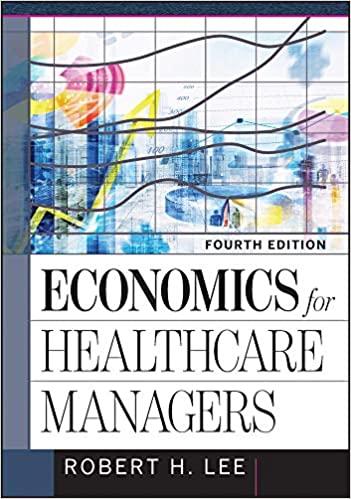What do American Airlines, Home Depot, Staples, Stanford University, AT&T, the Mayo Clinic, and Safeway have in
Question:
What do American Airlines, Home Depot, Staples, Stanford University, AT&T, the Mayo Clinic, and Safeway have in common? They all price discriminate (Howe 2017). They charge different customers different amounts for the same product. Pharmaceutical discounts are the clearest examples of healthcare price discrimination because the products are identical. Only the prices differ. A cash customer (e.g., someone without insurance coverage) may pay the highest price, the list price. However, in some instances, insured customers may pay more because insurers have not passed on discounts to their beneficiaries (Ornstein and Thomas 2017).
Most customers pay much less than list prices. Insurers negotiate discounts with manufacturers and pharmacies. These discounts are typically about 30 percent (Goldberg 2017). Some hospitals and HMOs have their own pharmacies and can negotiate even better deals with manufacturers. These organizations sometimes pay as little as 40 percent of list prices. Most discounts come in the form of rebates, meaning that a purchaser pays the list price up front but gets a payment from the seller later. This makes resale more difficult and limits price transparency (Morgan, Daw, and Thomson 2013).
The federal government has multiple discount programs. The largest is the Medicaid rebate program, which requires manufacturers to pay a rebate that varies by the type of drug. Prices, formularies, and copayments vary from state to state, so it is not clear that the Medicaid rebate program covers the most effective medications or gets the best prices (Luthra 2017). Many federally funded clinics and hospitals are eligible for the Medicaid discount. However, these agencies can often negotiate better deals because they can buy wholesale and because they can choose drugs for their formularies.
Tribal and territorial governments can use the prices on the Federal Supply Schedule, which federal agencies use to buy common supplies and services. The Department of Defense, the Department of Veterans Affairs (VA), the Public Health Service, and the Coast Guard may get prices that are slightly lower than Federal Supply Schedule prices because of a provision called the federal ceiling price. This provision caps the price using a formula based on private-sector transactions. Finally, these agencies can try to negotiate prices below the federal ceiling price. The VA, which uses a national formulary, has used its bargaining power to get substantially better prices. Good, Emmendorfer, and Valentino (2017) report that the VA gets the steepest discounts in the country, with prices as much as 44 percent lower than Medicare prices.
Discussion Questions
• Why do drug firms give discounts voluntarily?
• Do other healthcare providers routinely give discounts to some customers?
• Why do the uninsured typically pay the highest prices?
• Why is the cash price sometimes lower than the insurance price?
• Why would a hospital usually get a better price for a drug than an insurance company?
• Why does the VA get such low prices?
• Suppose a law was enacted that required drug manufacturers to give state Medicaid agencies the same price they negotiated with the VA. How would Medicaid and VA prices change?
• Should Medicare adopt the VA formulary?
Step by Step Answer:






